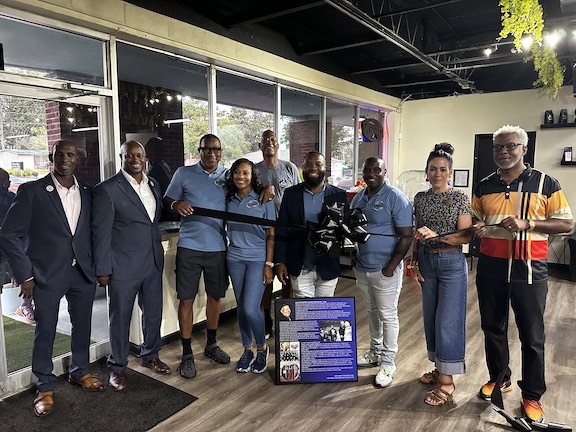Georgia Power discusses nuclear, solar, energy costs
Published 10:00 am Monday, October 17, 2011
Georgia Power president and CEO Paul Bowers visited Valdosta late last week to talk nuclear energy, solar and what the company has been doing to cut energy costs for their customers.
Trending
The Westinghouse AP 1000 plant being developed near Augusta is looking to bring about 2,200 megawatts of energy through two new units which are projected to be online in 2016 and 2017. Vogtle Nuclear will mark the first real nuclear construction in the country in the last 30 years after the Three Mile Island incident in Pennsylvania in 1979.
“The nation is watching us as we execute the first nuclear power plant in 30 years,” said Bowers. “It’s going really well, from a standpoint of being an economic choice, there’s a lot of capital investment but the incremental cost of energy at 1.2 and 1.8 cents per kilowatt hour, that’s what you want is that low-cost generation coming into play.”
About 3,000 construction jobs and 800 full-time jobs are expected to be created for the $14 billion project, but only federal regulators can approve the project. According to Bowers, so far, so good. They are reviewing site plans with the Nuclear Regulatory Commission and are using the Advanced Passive design to provide water cooling in the event that power is lost to the plant during a storm or failure.
“The evaluation has gone through,” explained Bowers. “The plant was modeled to withstand the impact of a 747 airliner coming and hitting the reactor.”
There are still hurdles that must be reached before nuclear energy becomes the magic potion for the nation’s dependency on foreign oil. Decades ago, President Jimmy Carter made the decision to store fuel rods with up to 80 percent leftover energy. This decision was made in a climate of nuclear fear and the option to re-use these rods is back on the table, Bowers explained.
“It was a proliferation issue with the plutonium which comes out of that,” said Bowers. “We were building our arsenal anyways but that’s what we have to deal with and we are dealing with. France and Japan are countries that have successfully re-used these rods so we are re-evaluating reprocessing.”
Trending
According to a West Georgia University study, the plant will provide a huge taxbase for the area and will support a number of smaller commercial businesses. Despite support from the local community for the most part, there are anti-nuclear folks against the expansion.
“You always are going to have a group and segment that is anti-nuclear,” said Bowers. “They’ve always been out there, but the design of the plant continues to be proven as the most safe design that they (NRC) have seen.”
Vogtle is expected to be in production for the next 50 years.
In an effort to diversify their portfolio and meet customer’s demands for alternative energy, solar is still an option. Bowers believes the technology will be cost-effective in the next few years, but right now it’s at 15-17 cents per kilowatt hour.
“It’s coming down,” said Bowers. “The big debate is whether customers are willing to subsidy to bridge to the technology. It’s still not as competitive to the normal generation of gas, but we’ll continue to see the cost per unit go down. They’re going to be able to compete for a slice of that generation, bid in and be competitive and we’ll select them.”
Bowers said that about 4,000 customers have chosen to subsidize alternative energy sources such as solar. This small slice of the roughly 2.4 million Georgia Power customers, he admits, is not many.
“The government is stimulating for renewables to give them a running chance but, when you remove them, the question is can they run on their own two feet?” said Bowers.
In the meantime, efforts are being made by the company to teach energy efficiency in the classrooms and to customers. He compares it the 1970s when the cost of resources forced Americans to cut fuel usage.
By visiting third, fifth, eighth grades and high school students, Bowers hopes that energy use can be cut to save customers money during this economy and help Georgia Power catch up on incremental power demand increases.
“Prices are going up on all fronts,” said Bowers. “You need to educate customers to use it wisely. We didn’t meet our all-time peak this past summer. I think it was 2,000 megawatts less. I think it’s the economy, bottomline. In Atlanta, where high-rise vacancies are at 28.6 percent, the thousands of square feet that are unoccupied will certainly (keep power consumption down.)”
“We’re really pretty fortunate,” said Terri Lupo, vice president of Georgia Power south region. “We haven’t felt the economy like the Atlanta area has.”





